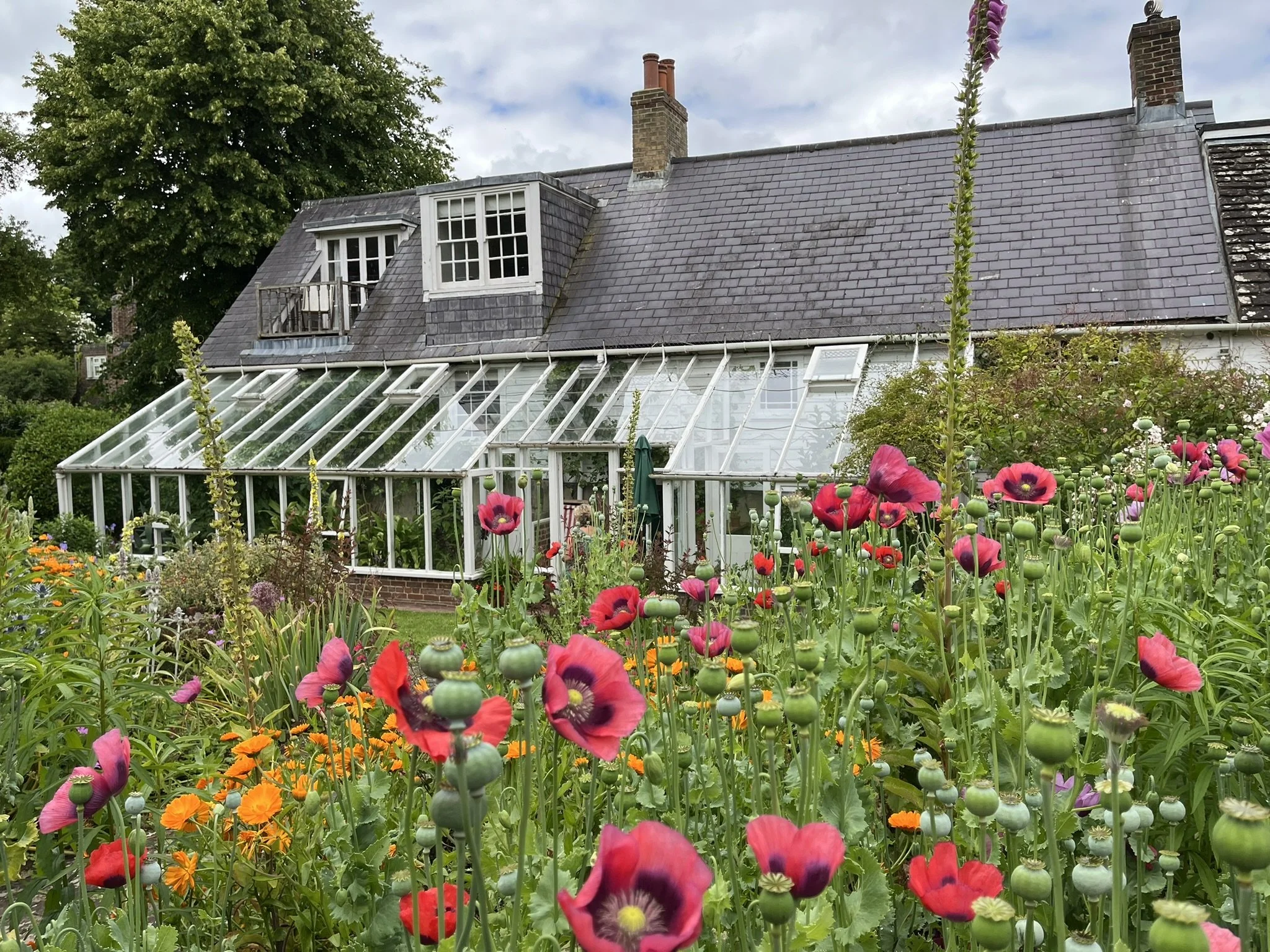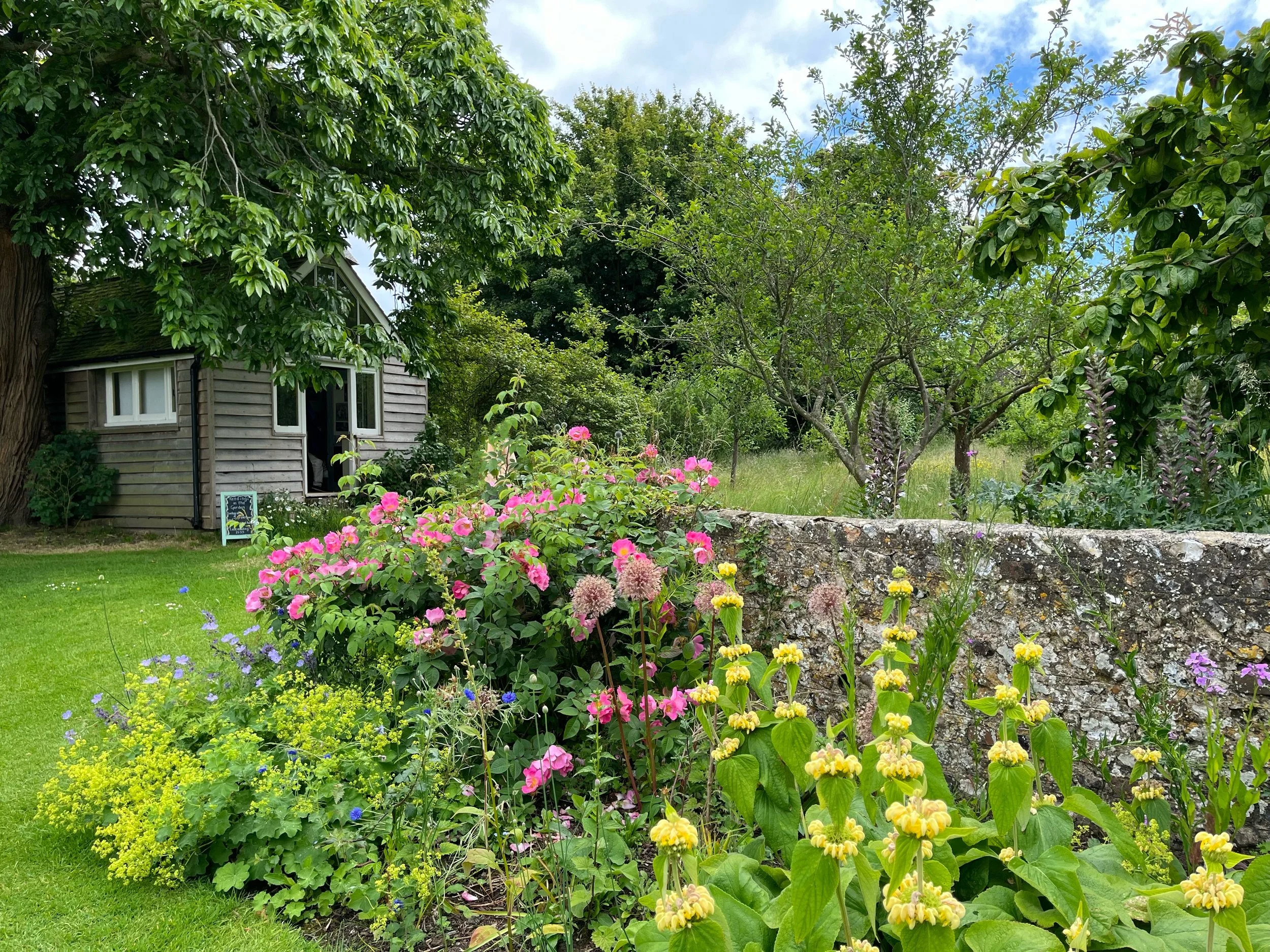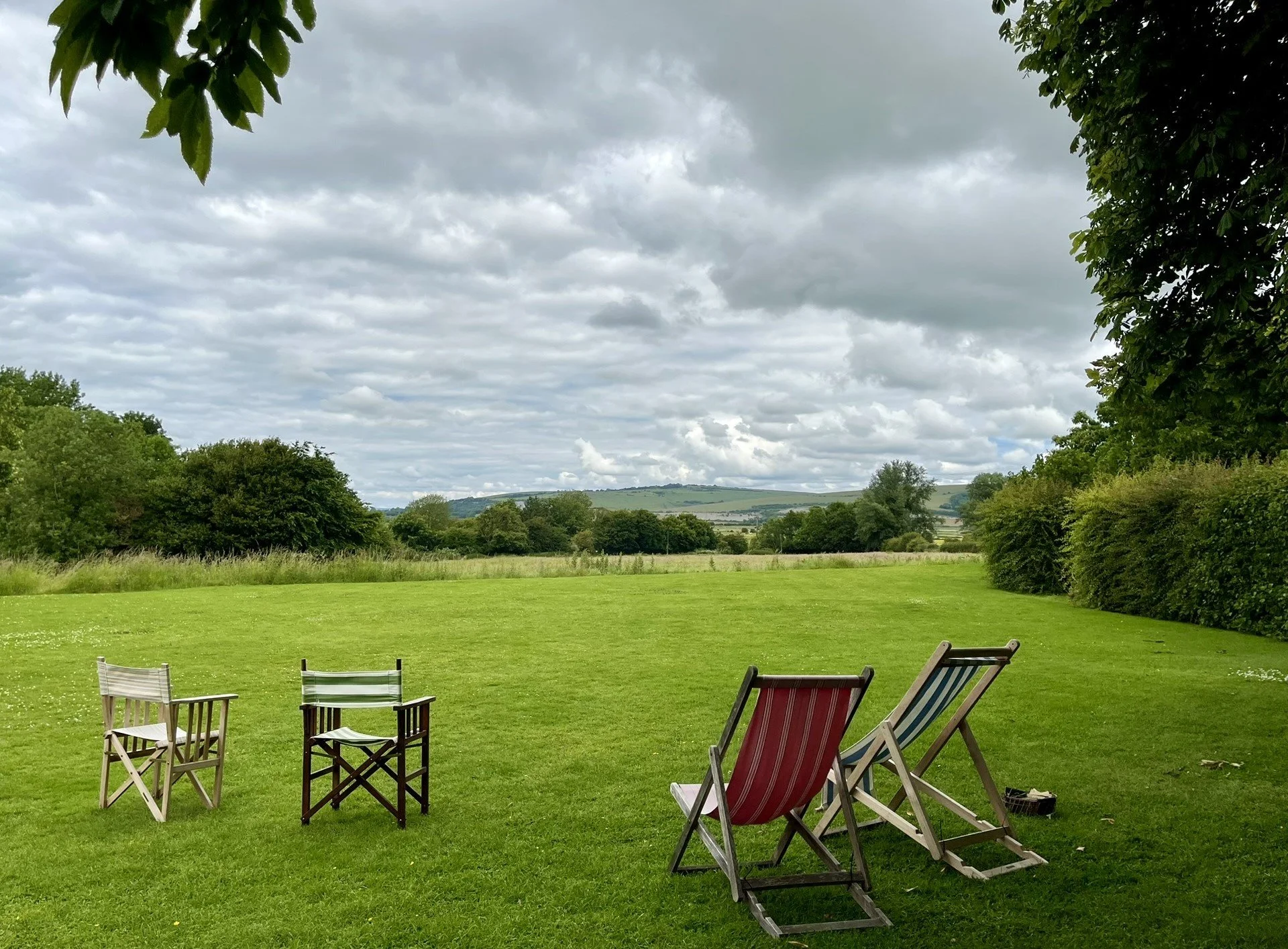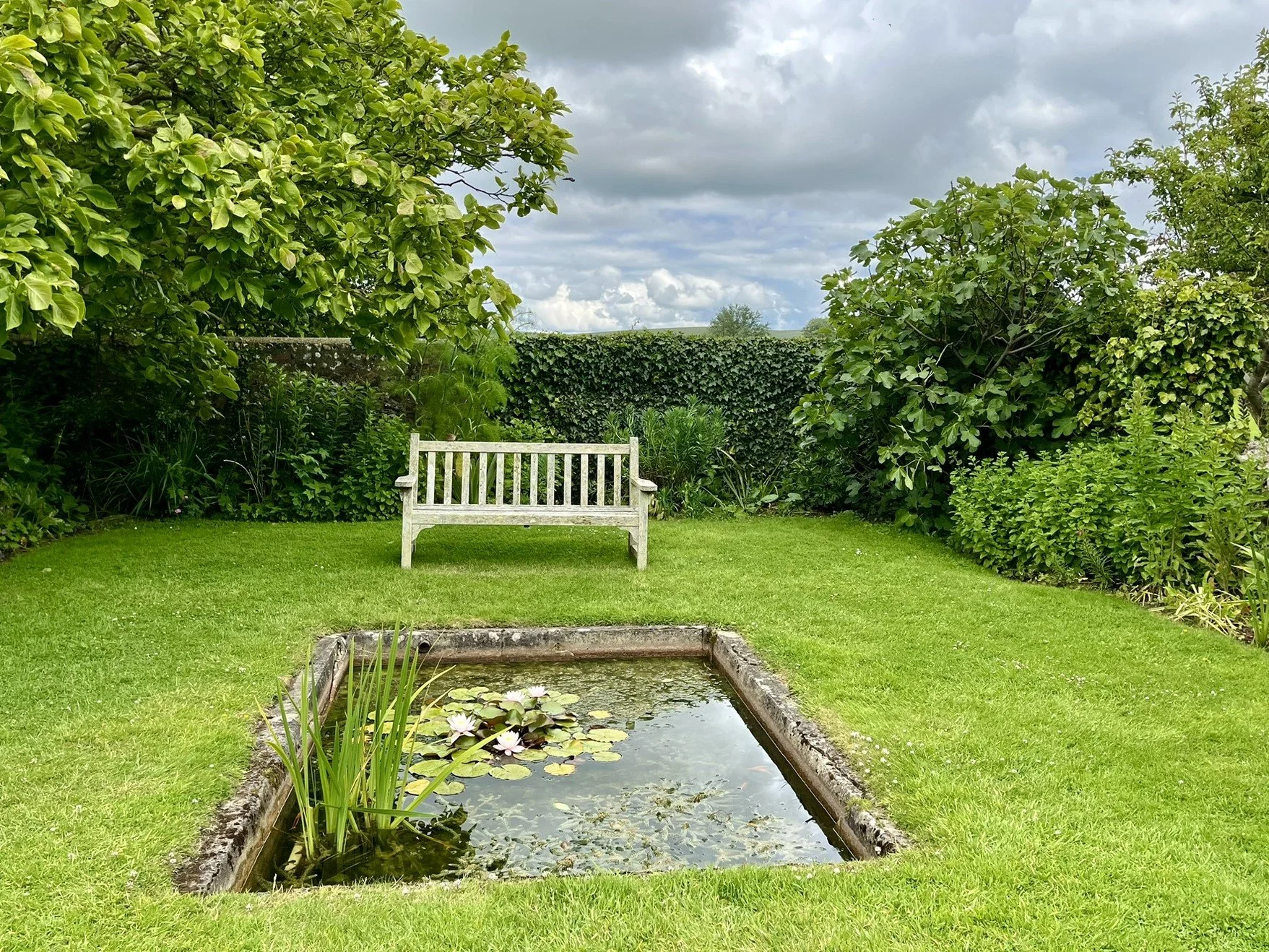Piotr Mierkowski: In stuckness, in play and… in ordinary things
In late June, my husband and I visited Monk’s House – Leonard and Virginia Woolf's country retreat nestled in the heart of rural Sussex. The seventeen-century farm house they acquired in 1919 and gradually refashioned became soon their permanent home. The cottage is full of books and artwork, and countless ordinary objects collected by the couple over the years. Amongst them numerous shells and stones, colourful beads and seed pods, flower pots and vases, milk jars, wooden boxes and tins; fireplace tiles and numerous chairs and tables of different shape and size most of them designed and decorated by Virginia’s older sister, the artist Vanessa Bell, and plentiful of canvases, stoneware and lamps painted with abstract designs in turquoise, yellow and greens by Virginia’s nephew, Quentin Bell.
I relished in walking around the Woolfs’ cottage, taking time and stopping every now and then to soak up its atmosphere, and closely examine all their collection. My thoughts would often drift back to our London flat, which used to house my therapy practice for many years, and which we happened to sell a few years ago. I had all sorts of objects there, each carefully chosen to remind me of different places and moments in my life. I have been missing the magic of that special space a lot. At present, my lifetime collection of objects is temporarily stored in a friend’s garage in anticipation of our move to a new home outside of London, where they will appear in a very novel space. I can’t wait to finally begin unwrapping them one by one, finding new space for each of my very special ordinary objects and enliven precious past memories, all at the same time. Being in transit as I am now, has definitely made the visit at Monk’s House all the more captivating.
The whole place here has a very special tranquil ambience. I was particularly taken by the simplicity of the garden room that was a later extension to their cottage and became ultimately Virginia Woolf’s bedroom; it was paid for from the profits of her novel Orlando. I found this room light-filled and unexpectedly airy in comparison with the rest of the house. It has a very calm and lived in feel, with lovely views over the wild garden. Accessed through the garden door – a true room of her own; every night she would leave the house to sleep here alone. I was not surprised to learn that this was one of the two places where Virginia wrote; here she worked in winter and when ill, mostly in her bed. “Ode to the bed” by the Chilean poet Pablo Neruda from his collection Odes to Common Things comes to mind, for whom an ordinary object such as bed is the symbol of life, joy and play, but also of suffering and mortality; “We go from one bed to the next / In this journey, / life’s journey. / The newborn, the afflicted, / The dying, / The lover and the dreamer alike: / They arrive and they will depart by bed…”
The second place Virginia wrote was a wooden shed at the end of the garden under a chestnut tree According to Leonard Woolf’s autobiography, here Virginia “sat to write in a very low armchair, which always appear to be suffering from prolapsus uteri; on her knees was a large board made of plywood which had an inkstand glued to it, and on the board was a large quarto notebook of plain paper which she had bound up for her and covered herself in (usually) some gaily-coloured paper. The first draft of all of her novels was written in one of these notebooks with pen and ink in the mornings.” Only later she would type the results up on her favoured desk that continues to stand in the wooden shed branded with cigarette burns, mug rings and splattered with ink spills and traces of light blue paint; the faint figures of a duck, a grid, and a sailboat carved into the wood are also visible. Her desk surface that carries, in one way or another, the imprint of the writer, was photographed some years ago by Annie Leibovitz, a celebrated American photographer. “To me, it says that art and life are messy” is a comment that accompanies her photograph of Virginia’s desk in the intensely personal book Pilgrimage (2004) that she published soon after the death of another famous writer, Susan Sontag, her longtime companion. It is as if Leibovitz was trying to find signs of life in mere objects she was drawn to and photographed, or to reanimate the people that were once connected to them.
French windows of Virginia’s “writing lodge” as she liked to call it, open out onto a view across the water meadows, to Mount Caburn and beyond, to The Downs, which “turn from green to blue, like opals” in the evenings. This is here she penned The Waves (1931) that contains one of my favourite affirmations: “Happiness is in the quiet, ordinary things. A table, a chair, a book with a paper-knife stuck between the pages. And the petal falling from the rose, and the light flickering as we sit silent.” Noticing the small, the inconsequential, contemplation of seemingly mundane things liberates the soul.
It is clear that Monk’s House residence was a very important place for the couple and a source of inspiration for Virginia’s writing. She must have benefitted from having a room of her own. Here she wrote parts of all her major novels from Mrs Dalloway to Between the Acts, as well as essays, reviews and letters. It was also here, on the desk in her writing lodge, that she left her farewell letter to Leonard before walking to the River Ouse to drown herself one chilly morning in March 1941.
Apart from the “house of many doors”, as Virginia called Monk’s House, when she first saw it, and the writing shed, their country retreat has a large, charming wild garden and the orchard, both of which have remained its main attraction. Connection with nature, observation of life of plants and animal behaviour played a vital part to the couple. Virginia’s novels remain a living proof the nature plays multiple roles in relation to her central characters, and more, she saw it as an unquestionably prominent figure within the lives of humanity. Take for instance the following portrayal of Mulberry’s the florists from Mrs Dalloway:
“There were flowers: delphiniums, sweet peas, bunches of lilac; and carnations, masses of carnations. There were roses; there were irises. Ah yes – so she breathed in the earthy garden sweet smell as she stood talking to Miss Pym who owed her help, and thought her kind, for kind she had been years ago; very kind, but she looked older, this year, turning her head from side to side among the irises and roses and nodding tufts of lilac with her eyes half closed, snuffing in, after the street uproar, the delicious scent, the exquisite coolness. And then, opening her eyes, how fresh like frilled linen clean from a laundry laid in wicker trays the roses looked; and dark and prim the red carnations, holding their heads up; and all the sweet peas spreading in their bowls, tinged violet, snow white, pale – as if it were the evening and girls in muslin frocks came out to pick sweet peas and roses after the superb summer's day, with its almost blue-black sky, its delphiniums, its carnations, its arum lilies was over; and it was the moment between six and seven when every flower – roses, carnations, irises, lilac – glows; white, violet, red, deep orange; every flower seems to burn by itself, softly, purely in the misty beds; and how she loved the grey-white moths spinning in and out, over the cherry pie, over the evening primroses!” Such image cannot be invented without knowing garden flowers intimately.
When we visited Monk’s House in late June, it was surrounded by flocked bells of foxglove, cheerful and unpretentious marigolds and cornflowers, and nodding heads of poppies. Borders were lit up by the masses of white-throated, cherry-red penstemons and bright yellow heads of Turkish sage that stood erect as if at attention, with their grey-green felty foliage hovering just above the ground. Leonard and Virginia had a taste for strong colours. And yet, as Virginia herself said, the Monk’s House’ garden was “all Leonard’s doing,” with her remaining merely an interested accomplice and regular assistant mostly at weeding. It was Leonard who created a garden composed of discrete areas – one of them being the Italian garden inspired by the couple’s European travels – all united by wobbly brick paths dotted with ancient urns and water features, borders packed full of herbaceous perennials and wisteria, clematis and ivy tangle over low flint walls and a rose climbs around Virginia’s bedroom window. All the garden continues unchanged till this day carefully preserved by National Trust.
Virginia, even if she “could get down to it with a will, get her hands dirty, attack the dandelions and the groundsel,” had remained mostly a keen observer of the garden and plants from afar, as Penelope Lively – a keen gardener herself, points out in her Life in the Garden (2017) – an engaging and far-ranging exploration of gardens in literature. Besides, their garden was also a place to gather with friends and lovers, sitting in deck chairs looking out over the Downs beyond, which Virginia described as “like the folded wings of grey birds”.
After Virginia’s death Leonard found deep connection and love with Trekkie Parsons, a married woman who lived sometimes with her husband and sometimes at Monk’s House. Their companionship was rooted in a shared passion for gardening. Trekkie was a keen botanist and collector of glasshouse plants, and Leonard wrote in a letter to her that she had “become so great a part of the garden and me… that I feel it’s wrong when the flowers come out and you’re not here.” Leonard seems to have understood the way gardens transcend time and offer the promise of hope, renewal and growth alongside the inevitable decay and death. It is easy for this later happiness and other female presence to get overlooked in the layers of this garden’s story.
Both Virginia and Leonard’s final resting places are in this garden. Two intertwined elm trees, called “Virginia” and “Leonard” by the couple, stood on the edge of the dewpond. Sadly, one was felled by a storm in the 1940s, and the other succumbed to Dutch elm disease many years later. Today, two lime trees mark the location of the original elms as well as plaques and busts of Virginia and Leonard Woolf marking their lives. As Lulah Ellender so beautifully put it in her 2022 book Grounding: Finding Home in a Garden, “Plants, paint, ink – all are in flux, and nothing remains the same. Within the constancy of the cycles of nature there is also impermanence and movement. For me, the garden at Monk’s House embodies this more than many others. Each spring the irises return, yet the garden evolves. The two statues watch on”.
Some of you may know, how much our garden means to me and my husband. It was our steadfast support throughout COVID pandemic, and, for me personally, continues as an unending source of wonder and inspiration. I cannot wait to explore the potential of the new garden as we move to our new home this autumn. I will definitely keep you posted. As for now I am leaving you with another lovely quote from Virginia Woolf, this time from her masterpiece To the Lighthouse:
“What is the meaning of life? That was all – a simple question; one that tended to close in on one with years. The great revelation had never come. The great revelation perhaps never did come. Instead, there were little daily miracles, illuminations, matches struck unexpectedly in the dark.”
Pior Mierkowski
https://www.gestalttherapist.co.uk/
gestaltpsychotherapy@gmail.com
Piotr Mierkowski MA Dip Psych is a UKCP Reg. psychotherapist, supervisor and international trainer with over thirty years of clinical experience in the NHS, voluntary sector and private practice in London and online.









